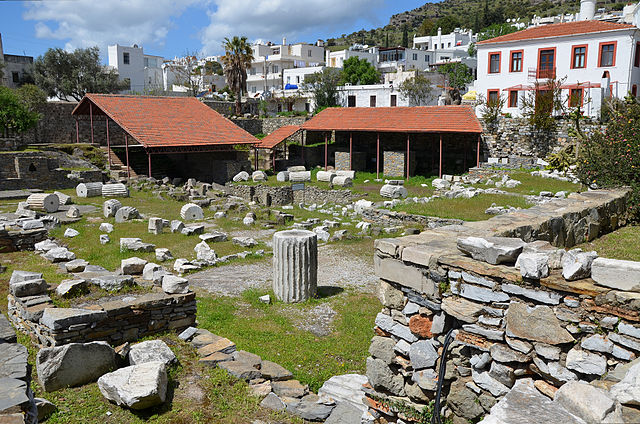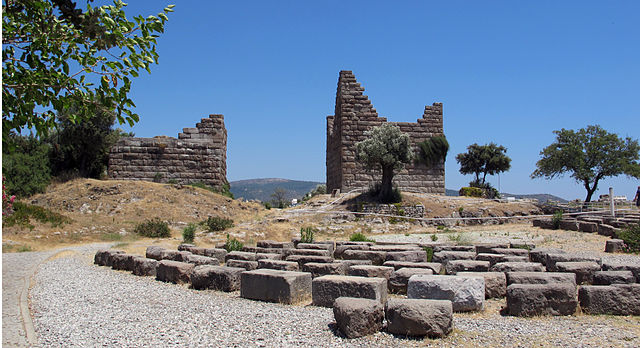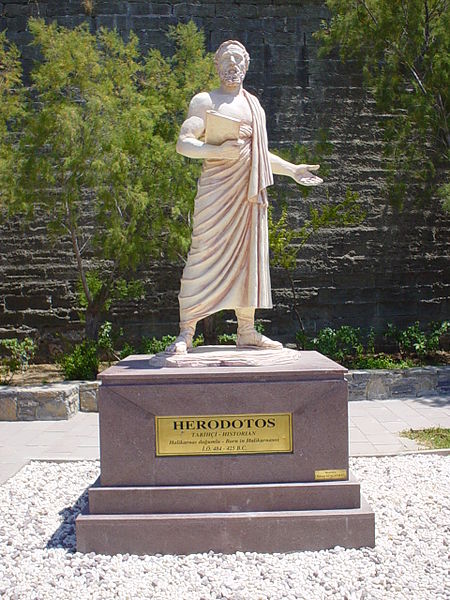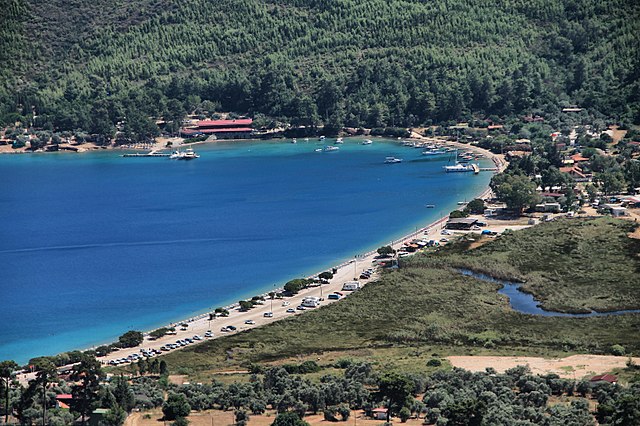Halicarnassus was an ancient Greek city in Caria, in Anatolia. It was located in southwest Caria, on an advantageous site on the Gulf of Gökova, which is now in Bodrum, Turkey. The city was famous for the Mausoleum of Halicarnassus, also known simply as the Tomb of Mausolus, whose name provided the origin of the word "mausoleum". The mausoleum, built from 353 to 350 BC, ranked as one of the seven wonders of the ancient world.
The ruins of the Mausoleum at Halicarnassus, one of the Seven Wonders of the Ancient World.
Relief of an Amazonomachy from the Mausoleum at Halicarnassus.
Myndos Gate. Ruins of the fortifications of Halicarnassus (modern Bodrum); 4th c. BC;
Herodotus (Greek: Ἡρόδοτος) is honored with a statue in his home of Halicarnassus (modern Bodrum).
Caria was a region of western Anatolia extending along the coast from mid-Ionia (Mycale) south to Lycia and east to Phrygia. The Carians were described by Herodotus as being Anatolian mainlanders and they called themselves Caria because of the name of their king. He reports the Carians themselves maintained that they were Anatolian mainlanders intensely engaged in seafaring and were akin to the Mysians and the Lydians. The Carians spoke Carian, a native Anatolian language closely related to Luwian. Also closely associated with the Carians were the Leleges, which could be an earlier name for Carians.
Theater in Caunos
The Mausoleum at Halicarnassus, one of the Seven wonders of the ancient world, was built by Greek architects for the local Achaemenid satrap of Caria, Mausolus (Scale model)
Relief of an Amazonomachy from the Mausoleum at Halicarnassus.
The coast of Milas.







